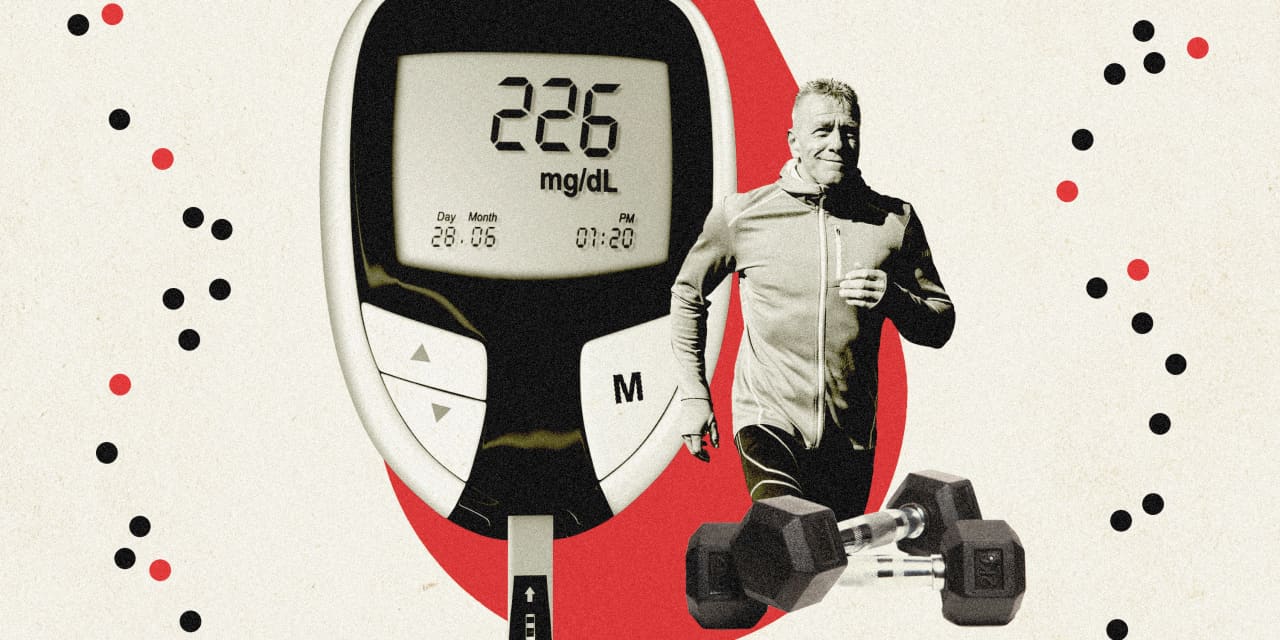Endocrinologist Shahrad Taheri put 70 people with Type 2 diabetes on a strict diet-and-exercise regimen for a year and 61% reversed their diabetes.
Taheri of Weill Cornell Medicine conducted the 2020 study in Qatar, a country with even higher levels of obesity and diabetes than the U.S. But he says the results, which were published in the Lancet medical journal, have applications around the world.
“The traditional view of Type 2 diabetes is that it’s an irreversible disease, that it will be with the patient for the rest of their life,” he says. His study, in which the average participant lost 26 pounds, confirmed his view that “obesity is the key driver of diabetes.“
There’s more good news for Type 2 diabetics. The introduction of powerful new weight-loss drugs could help millions escape the ravages of their disease. But the new drugs are expensive and if you stop taking them, you are likely to regain the weight; some people won’t tolerate their side effects; and diet and exercise will still be helpful even to people taking the drugs, doctors say.
The new drugs “absolutely reduce insulin resistance and produce weight loss, exactly what you’re trying to do with lifestyle intervention,” Jordan Emily Perlman, an endocrinologist at Johns Hopkins. “The idea is you use these drugs to control your appetite while you’re making lifestyle changes.”
An estimated 37 million Americans have diabetes. Roughly 5% of them have Type 1 diabetes, meaning their pancreas has stopped, or largely stopped, producing insulin. Diet and exercise is important for them too, but they must take insulin for the rest of their lives.
But the vast majority of diabetics have Type 2 diabetes, a different disease. Their pancreas is still producing insulin, an essential hormone that permits sugar to enter their cells where it is used for energy. But the cells of Type 2 diabetics have become insulin resistant, which means that their blood sugar levels don’t drop normally after a meal.
“Many things can contribute to insulin resistance including poor diet, lack of physical activity, obesity, particularly with fat around the belly,” says endocrinologist Omar El Kawkgi of the Mayo Clinic. If left untreated, Type 2 diabetes damages the cardiovascular system and organs just as it does for Type 1 diabetics.
The good news is that Type 2 diabetes, particularly if it is a recent onset, isn’t necessarily a life sentence. Diet and exercise together work better to put Type 2 in remission than either one alone.
“Diet helps control blood sugar by controlling carbohydrate intake, while exercise improves how sensitive the body is to insulin to help reverse insulin resistance,” El Kawkgi says.
The positive effects of exercising last for up to three days, according to Sheri Colberg, an exercise physiologist who is an expert on exercise and diabetes. “I always says that you’re as good as your last bout of aerobic/cardio exercise,” Colberg says. She has Type 1 diabetes herself and exercises regularly to help control it.
Weightlifting also helps. “It causes you to gain and retain muscle mass, which is where the body stores most dietary carbohydrates,” Colberg says.
Even if you reverse Type 2 diabetes, you aren’t off the hook. You have to keep exercising and eating correctly, or your Type 2 diabetes will return just as bad as before.
“Whenever people are able to successfully reverse their diabetes with diet and exercise, certainly we applaud them,” says Perlman of Johns Hopkins. “But we tell them this is going to be an ongoing battle.”
Write to Neal Templin at [email protected]
Read the full article here


